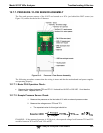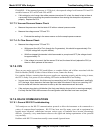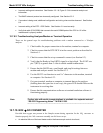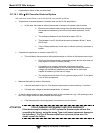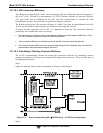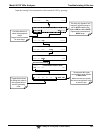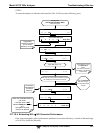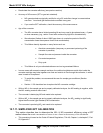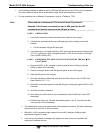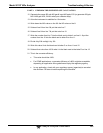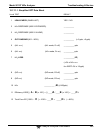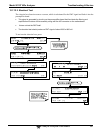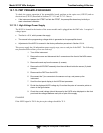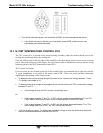
Model 9110T NOx Analyzer Troubleshooting & Service
Teledyne Analytical Instruments 296
Recalculate the converter efficiency (see previous section)
Accuracy of NO
2
source (GPT or gas tank standard).
NO
2
gas standards are typically certified to only ±2% and often change in concentrations
over time. You should get the standard re-certified every year.
If you use the GPT calibration, check the accuracy of the ozone source.
Age of the converter.
The NO
2
converter has a limited operating life and may need to be replaced every ~3 years
or when necessary (e.g., earlier if used with continuously high NO
2
concentrations).
We estimate a lifetime of about 10000 ppm-hours (a cumulative product of the NO
2
concentration times the exposure time to that concentration).
This lifetime heavily depends on many factors such as:
Absolute concentration (temporary or permanent poisoning of the
converter is possible).
Sample flow rate and pressure inside the converter.
Converter temperature.
Duty cycle.
This lifetime is only an estimated reference and not a guaranteed lifetime.
In some cases with excessive sample moisture, the oxidized molybdenum metal chips inside the
converter cartridge may bake together over time and restrict air flow through the converter, in which
case it needs to be replaced.
To avoid this problem, we recommend the use of a sample gas conditioner (Section
3.3.2.6).
Section 11.3.8 describes how to replace the NO
2
converter cartridge.
With no NO
2
in the sample gas and a properly calibrated analyzer, the NO reading is negative, while
the NO
2
reading remains around zero.
The converter is destroying NO and needs to be replaced.
With no NO
2
in the sample gas and a properly calibrated analyzer, the NO
X
reading is significantly
higher than the actual (gas standard) NO concentration.
The converter is producing NO
2
and needs to be replaced.
12.7.11. SIMPLIFIED GPT CALIBRATION
This section describes how to determine the NO
2
NO converter’s efficiency using a GPT
method where the actual concentration of ozone is not a factor in the accuracy of the calculation.
This procedure is based on the Code of Federal Regulations, Title 40, Chapter I, subchapter C, Part
50, Appendix F.




